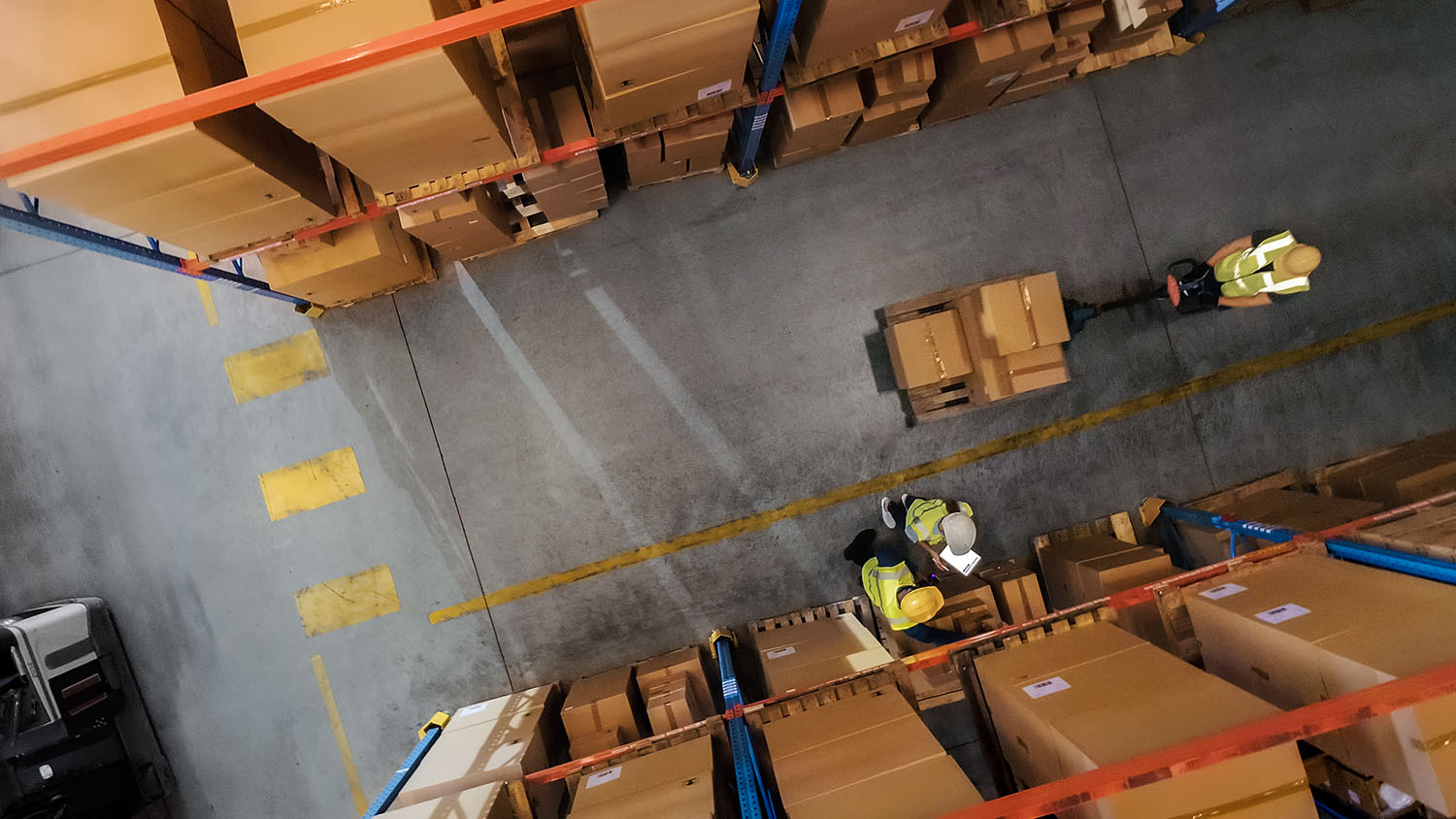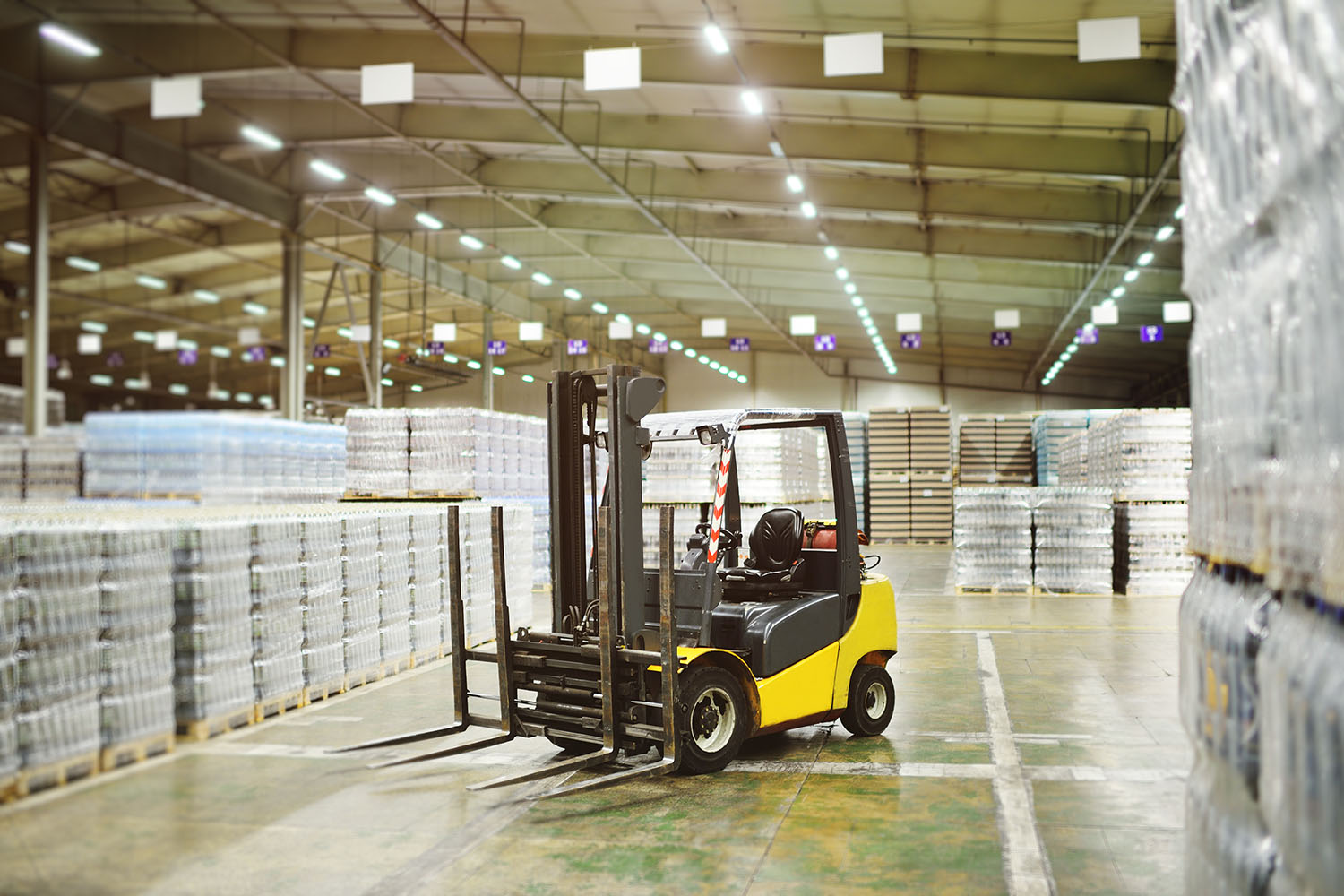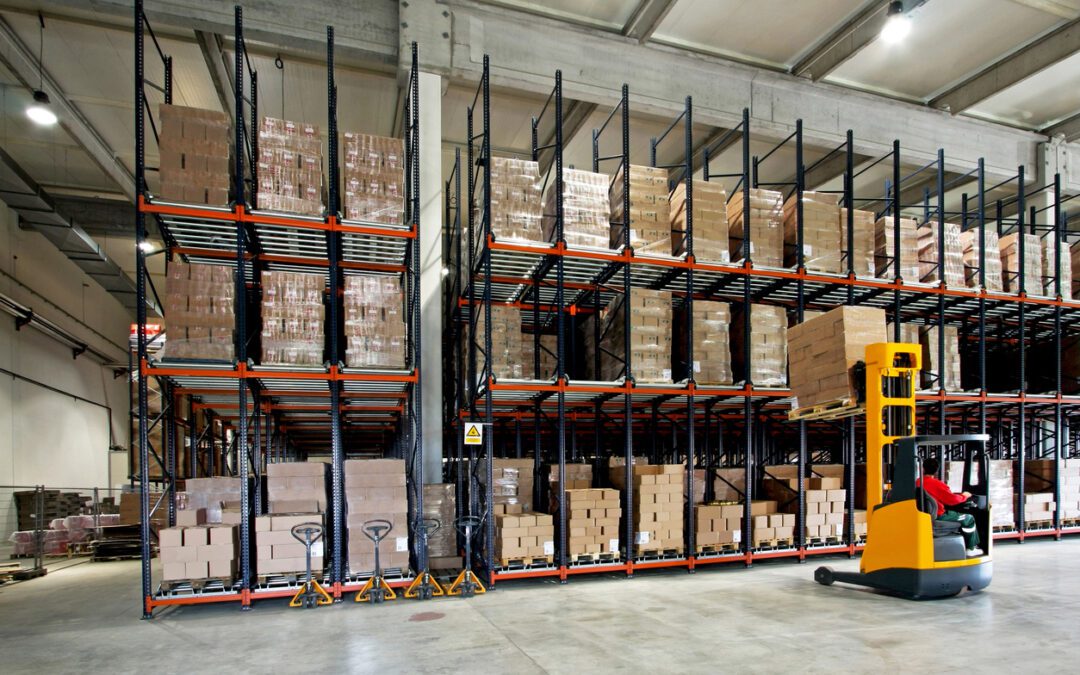The moment items are unloaded at a warehouse, the putaway process assigns items to pre-set shelves based on the item’s size, weight, frequency of picking, and relationship to other products. Nothing is more critical to a warehouse than making the most efficient and profitable use of its storage space.
According to a 2023 survey by Supply Chain Dive, 58% of manufacturers expect to grow their warehouse space over the next three years. Having a putaway system that doesn’t rely on worker memory, handwritten notes, or manual spreadsheets makes such warehouse growth possible.
In this article, we’ll cover the entire putaway process, its benefits, common methods, applications, and best practices to optimize 3PL and other warehouse operations.
Key Takeaways
- The putaway process in warehouse management optimizes inventory by placing items according to predefined rules like product characteristics or demand (size, type, etc.) for faster order picking.
- The warehouse putaway process involves inspecting, categorizing, labeling, assigning storage, transporting, storing, and logging products.
- The best putaway processes require a warehouse management system (WMS) like Da Vinci’s to generate algorithms that decide storage location to waste less shelf space.
What is the Putaway Process in Warehouse?
The putaway process in a warehouse organizes items into designated inventory spaces.
Think of it like a grocery store: every item has a designated spot—crisps neatly in the snacks aisle, cold drinks in the beverages section, and produce in its corner. Your staff and customers can locate and pick items easily on the go.
In 3PL warehouses, this applies at a much larger scale. The putaway process uses automated tools like warehouse management systems to assign specific storage locations for each item. This minimizes the risk of misplaced items and operational delays by strategically organizing inventory, and staff can track stock levels and pick items without unnecessary travel.
The items are organized based on several factors such as:
- Product type
- Demand or frequency of orders
- Warehouse layout.
How the Warehouse Putaway Process Works: Key Steps Explained
Here’s the warehouse putaway process step by step:
- Receiving Goods: The warehouse receives shipments from vendors and verifies them against purchase orders to confirm quantity and product type.
- Inspection and Labeling: Each item is checked for damage, categorized by type and size, and labeled with barcodes or RFID (Radio Frequency Identification) tags for tracking.
- Assigning Storage Locations: Items are then stored based on demand, size, storage space, and proximity to the picking area.
- Transportation to Storage Area: All the items are transported manually via forklifts, conveyor systems, or to their assigned storage locations.
- Logging and Verification: Each item’s exact location is logged into the system for accurate tracking and verified for readiness during order fulfillment.
Pro Tip: Complete the putaway process on the day goods arrive to avoid misplacements or damage.
Types of Putaway Process
There are four methods of deciding storage locations in warehouse operations:
1. Directed Putaway
The directed or slotted putaway in a warehouse management system (WMS) uses predefined rules (e.g. product characteristics or demand) and real-time data to guide where items should be stored.
Directed putaway is best for: Warehouses managing diverse inventory, such as perishable goods, bulky items, or high-turnover products that require precise storage locations.
2. Random Putaway
The random putaway process stores incoming items in any available space instead of assigning them fixed locations. This method saves organization time but often leads to misplacements, errors, and a delayed picking process.
Random Putaway is best for: Warehouses with small inventory or seasonal products.
3. Fixed Putaway
In fixed putaway, items are stored in assigned locations within the inventory. These locations remain unchanged over time and are usually determined by criteria such as product type, destination, weight, size, or usage rate.
Fixed Putaway is best for: Manufacturing facilities to store spare parts.
4. Hybrid Putaway
Hybrid putaway combines random and fixed putaway methods. Some items are assigned in fixed locations (e.g., high-demand products), while less frequent items are stored randomly based on available space. This putaway process gives flexibility according to predictable and unpredictable inventory patterns like seasonal demand, stock movements, or order volume.
Hybrid putaway is best for: Retail stockrooms, pharmacies, and distribution centers that manage a mix of high-demand and frequently accessed items.
5 Challenges in the Warehouse Putaway Process
Here are some of the common challenges warehouses face when applying different putaway processes:
Challenge #1: Incorrect Item Placement
Managing inventory by randomly placing items often leads to misplacements and delays. Unique or irregular items often leave workers second-guessing, even in warehouses with fixed locations.
A single misplacement can slow down the entire fulfillment process; workers waste time searching for missing items and orders pile up.
Challenge #2: Inventory Mismatches
Inventory mismatches happen when recorded stock levels don’t match what’s on the shelves. Staff scramble to locate items marked as “in stock” but nowhere to be found, or find excess inventory taking up valuable space. These errors disrupt operations, delay orders, and lead to stockouts or overstocking, leading to dissatisfaction for 3PL warehouse clients.
Challenge #3: Outdated Software Fail to Synchronize
Many warehouses rely on outdated software to sync in real-time. These software lack modern storage capabilities causing inventory mismatches, disrupted workflows, and delayed item retrieval and order fulfillment.
Da Vinci’s cloud-based WMS features real-time updates and fast syncing capability, even during high-traffic use. It centralizes all your data so you or your staff can easily know where to store each item, what goods need to be restocked, and the best routes to speed up the picking process. It also adjusts storage usage according to your growing inventory needs.
Challenge #4: Lack of Coordination
Putaway and picking teams often struggle to stay on the same page, especially during inventory offloading. When item locations aren’t updated or communicated clearly, things get misplaced, slowing warehouse operations.
Challenge #5: Failure to Rotate Stock or Do a Quality Check
A lot of warehouses skip proper quality checks on incoming shipments or forget to rotate stock based on freshness or expiry dates. This simple mistake can lead to big financial losses, piles of wasted inventory, and even penalties for non-compliance.
How to solve these challenges?
You can improve your warehouse putaway process by adopting two strategies:
- Advanced Staff Training (Solution A): Train your staff to identify proper storage zones, prioritize high-demand items, and use WMS tools for real-time inventory updates. This helps reduce errors and speeds up operations. Clear communication between putaway and picking teams improves coordination, avoiding misplaced items and delays during order fulfillment.
- Using Advanced WMS Software or Tools (Solution B): A WMS simplifies the putaway process by assigning storage locations and tracking inventory from arrival to shipping out. Items are placed strategically based on demand and size, making retrieval faster and minimizing workflow disruptions.
The Benefits of Putaway Process: Why It’s Important for Warehouses
Some ways your warehouse can benefit from the putaway process are:
- Optimizes Warehouse Layout: Large warehouses often complicate inventory management. The putaway process improves your warehouse’s layout by dividing it into sections or assigning clearly defined shelves so you can make the most of your storage without overcrowding it.
- Improves Order Picking Process: Whether you’re using batch picking or wave picking, the putaway process helps you store items in a way that allows pickers to retrieve them easily.
- Prevents Inventory Misplacements: The putaway process tracks every item from the moment it arrives in the warehouse until it leaves by assigning a specific storage area for each product.
- Cost Saving: It cuts costs by optimizing storage areas, managing inventory, and reducing labor efforts to organize and retrieve orders quickly.
- Reduced Errors: Organized storage reduces the risk of staff mismatching items during order picking.
- Increase Order Fulfillment Speed: The putaway method places items by proximity, making retrieval easier during order fulfillment. This speeds up packing and shipping, boosting satisfaction for 3PL warehouse clients.
Warehouse Putaway Process Applications
Examples of where the putaway process is used to optimize operations include: :
Pharmaceutical Warehouses
Pharmaceutical companies like Pfizer use the putaway process to categorize sensitive materials by regulatory requirements, storing items in designated zones for controlled access and compliance.
Third-Party Logistics (3PL)
Third-party logistics providers like UPS (United Parcel Service, Inc.) use automated putaway systems to manage the storage of time-sensitive and high-volume shipments for their clients.
They use RFID tags, barcode scanners, and warehouse management systems (WMS) to scan incoming shipments and assign storage of each item by its characteristics (product type, demand, or size). This reduces errors and delays in global distribution.
Retail and Grocery Distribution
Companies like Target, Walmart, and Carrefour use putaway methods to store high-demand and perishable items strategically for quick picking.
According to Supply Chain Brain, warehouses lose around $163 billion annually due to overproduction and waste. Stock often spoils before reaching shelves (4.3%) or gets discarded as excess inventory (3.4%). By 2024, these losses are estimated to reach $1.5 trillion due to shrinkage, overproduction, and stockouts.
Without the putaway process, shipments pile up at loading docks, perishable goods get buried in the wrong spots, and high-demand items are lost in cluttered aisles.
Warehouse management systems (WMS) fix this by assigning storage locations the moment shipments arrive. Perishables are placed in easily accessible areas, bulky items are kept out of high-traffic zones, and fast-moving stock is stored close to picking stations.
5 Best Practices to Optimize Putaway Process in Warehouses
Here are 5 best practices for optimizing your putaway process in a warehouse:
1. Warehouse Layout for Organized Management
You can improve your warehouse operations by optimizing its layout. Organize sections or zones according to the frequency of orders, product type, or other criteria to lower travel time and simplify placing items correctly in assigned locations.
2. Real-Time Analytics for Stock Levels
With real-time inventory analytics, you can track items arriving in the warehouse, and their placement after quality assurance in the designated areas. Tools like WMS help you know recent stock levels to balance quantities and avoid waste.
3. Cross Docking for Space Preservation
Use advanced WMS tools to quickly transfer items from incoming shipment to outgoing without storing them in the warehouse, also known as, cross-docking. This reduces storage needs and speeds up the workflow.
4. Analyze Data for Smart Storage Decisions
Use data insights like demand patterns, real-time inventory, existing routes, traffic flow, and predictive reports to analyze your warehouse operations and staff performance. This allows you to make better use of space despite huge amounts of shipments.
5. Use Serial Number Tracking
Serial number tracking assigns unique codes to products for accurate placement on shelves and swift item retrieval when needed. With advanced warehouse management systems, you can track every item in real time, reduce errors, and keep your inventory perfectly organized.
Optimize Warehouse Putaway Process with Da Vinci Software
Warehouse management systems like Da Vinci use cloud-based solutions to combine automated and manual putaway processes for 3PLs and other warehouses. The software tailors space utilization according to your warehouse’s workflow needs. It tracks inventory and guides your staff during item placements to speed up operations, especially during peak season periods.
Da Vinci combines putaway elements of cross-docking (directly moving a shipment from inbound to outbound trucks), intelligent auto-packing (smart packaging to reduce space usage and shipping costs), and serial number tracking (unique numbers to monitor item’s availability and location) to optimize item placements by assigning designated locations for quick retrievals. This helps 3PLs manage growing inventories while reducing errors and delays in order fulfillment.
The easy interface reduces the time needed for staff training, so you can outgrow your current revenue. Our cloud-based software supports ERP and OMS integrations. It also supports connections to WCS, FTZ, and robotics systems to save time and effort in onboarding into new systems.
Whether you are a 3PL or wholesale warehouse, WMS is your solution to overcome inventory management issues and order-picking delays.
Request a demo to see how Da Vinci can optimize your warehouse putaway process.
FAQs
What is a putaway warehouse?
A putaway warehouse is a system of receiving, organizing, labeling, and then storing items in designated locations by product type or frequency. It uses automated systems like WMS to maximize space utilization for quick retrieval during the picking process.
What are the 5 steps of a warehouse?
The 5 steps of a warehouse operation are: receiving, putaway, storage, picking, and shipping. The putaway process uses WMS tools to organize items in inventory as soon as they arrive to simplify the next steps.
How to do putaway?
You can use automated tools like WMS for the putaway process to assign optimal storage locations. Then, transport items to designated spots and update the system for accurate tracking.



